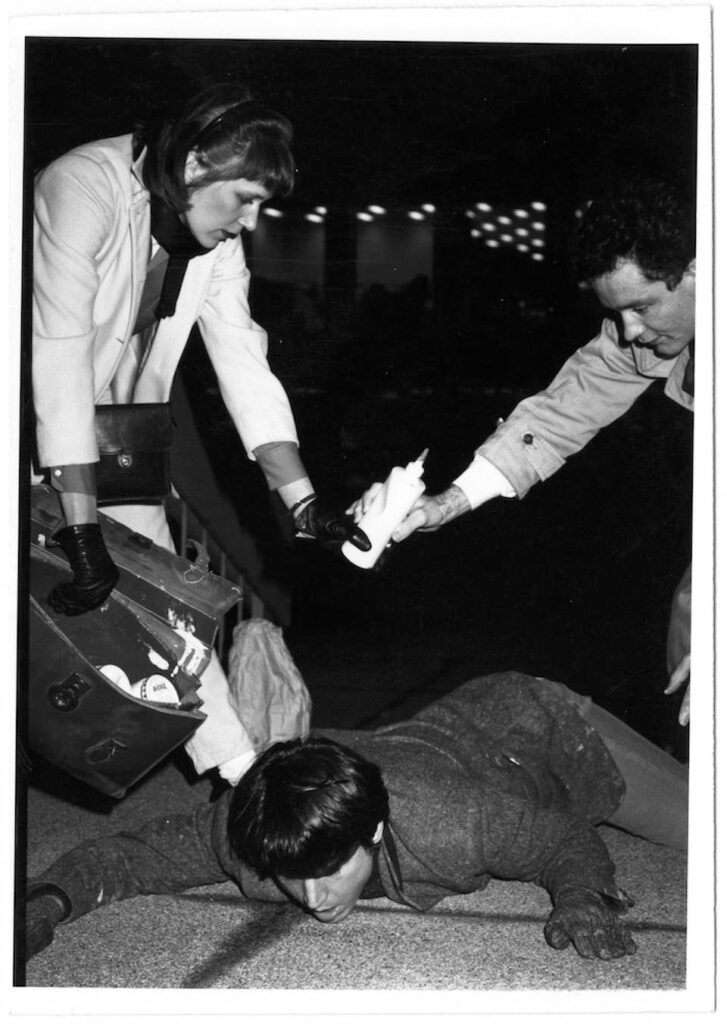Known colloquially as the “Godfather of Street Art,” Hambleton’s legacy transcends the confines of time and space.
During the early 1980s, he was a fixture in the vibrant streets of Manhattan, alongside other legendary figures like Keith Haring and Jean-Michel Basquiat.
Born on June 23, 1952, in Canada, Richard Hambleton left an indelible mark on the art world before his passing on October 29, 2017. Known colloquially as the “Godfather of Street Art,” Hambleton’s legacy transcends the confines of time and space. During the early 1980s, he was a fixture in the vibrant streets of Manhattan, alongside other legendary figures like Keith Haring and Jean-Michel Basquiat. These artists, all grappling with their own tragic narratives, shared a common passion that led them to explore the scrawled walls and rugged sidewalks of New York City, transforming them into their canvas of choice.

In today’s world, names like Banksy, Kaws, Shepard Fairey, and Blek Le Rat resonate strongly in the realm of street art. However, it’s crucial to acknowledge that without the groundbreaking work of Richard Hambleton, these artists, who pay homage to him in interviews and art practice, may never have developed their unique street art lexicons. Hambleton’s artistic journey began with splattered, outlined figures adorning buildings throughout the Lower East Side. A frail yet determined figure, he navigated the downtown scene, never once dropping the buckets of black paint he balanced alongside his trusty paintbrush—his tools of excellence. Before his iconic Shadowman pieces emerged, Hambleton initiated his public art journey with the “Image Mass Murder” series from 1976 to 1978. In this precursor to the Shadowman works, he painted police “chalk” outlines around volunteer “homicide victims,” dripping crimson paint on them, creating realistic crime scenes that were both critiques of police and documents of urban malefactions. With unwavering discipline, Hambleton traversed 15 major cities across the United States and Canada, producing these provocative outlines.

Then came the clandestinely executed Shadowman pieces—highly stylized, life-size figures and animals that appeared on derelict structures, starting in downtown Manhattan and eventually adorning the Berlin Wall. While Hambleton was a fixture in the East Village gallery scene during the early ’80s, he later retreated to his studio on the corner of Grand St. and Orchard St. This retreat marked a significant shift in his artistic focus, as he explored gestural abstraction inspired by nature and the 19th-century American Luminists. His late-career exhibition in 2007, aptly titled “The Beautiful Paintings,” showcased this transformation. Tragically, during this period, he battled skin cancer and turned to self-medication as a means of coping. In 2012, Hong Gyu Shin opened Shin Gallery across the street from Hambleton’s studio. This new gallery became a significant chapter in Hambleton’s life.

He frequently visited, engaging in lively discussions about art history and the downtown scene with Shin. Hambleton, with his characteristic sharpness and opinions, introduced Shin to many luminaries of contemporary art, regaling him with stories of his time at Club 57 and his art exchanges with Basquiat. However, as Hambleton battled increasing destitution and addiction, he faced eviction from his studio due to unpaid rent. Left with nowhere to work and no friends to turn to, Hong Gyu Shin extended a helping hand. He offered Hambleton the gallery as a makeshift studio after hours. Each evening, the gallery staff would clear away the exhibited artworks, making space for Hambleton’s creative process. By morning, Hambleton’s pallid canvases would transform into dazzling images, a testament to his enduring artistic spirit. Among the remarkable artworks that emerged from this collaboration is “Standing Shadowman.” Painted in acrylic on a steel door, this piece exemplifies Hambleton’s signature Shadowman style. Using a steel door as his canvas, Hambleton not only showcases his artistic maturity but also underscores his unique ability to transform urban surroundings into captivating art. It echoes the tradition of artists like Basquiat, who used doors as their canvas, making a profound statement about the intersection of art and the city. Richard Hambleton’s life and art are a testament to the transformative power of creativity. His journey from the gritty streets of Manhattan to the refined galleries of the art world is a narrative of resilience, innovation, and unwavering dedication to his craft. As we explore Hambleton’s legacy through “Standing Shadowman” and other iconic works, we gain a deeper appreciation for the artist who shaped the very fabric of street art and urban expression.
